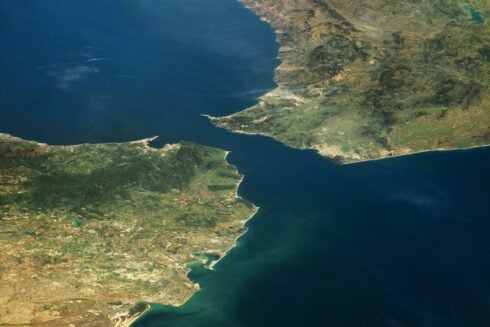THE Atlantic ocean will ‘close’ in the Strait of Gibraltar and form a new volcano filled mountain range in a geological phenomenon known as a ‘ring of fire’.

It will begin in the next 20 million years, a short period of time in geological terms.
Although the water body is not shrinking or disappearing, Eurasian and African tectonic plates are converging, causing the Atlantic Ocean to become narrower at the Strait of Gibraltar.
In millions of years, this process could eventually lead to the closure of the Atlantic Ocean, forming a new mountain range.
Using computational models, University of Lisbon researchers predicted plate tectonics underneath the Gibraltar Strait will move further into the Atlantic, causing a ‘ring of fire’.
This refers to an area characterised by active volcanoes and frequent earthquakes.
They form via ‘subduction zones’, where one tectonic plate is forced beneath the other, creating intense geological activity.
Currently, there is a ring of fire in the Pacific Ocean stretching from Australia to South America.
This area is home to 75% of our volcanoes and 90% of earthquakes occur there.
The formation of subduction zones is part of a geological process known as the Wilson Cycle.
Oceans are formed as tectonic plates move apart and close again as they move back together over hundreds and millions of years.
The Atlantic ocean was formed in this way after the breakup of the Pangaea megacontinent some 180 million years ago.
If the Atlantic is to close, new subduction zones have to be formed.
However, they can also ‘migrate’ or ‘invade’ other areas and this is what is expected to happen in Gibraltar.
Two other subduction zones currently exist in the Caribbean Lesser Antilles and the Scotia Arc, Antarctica.
In both cases, they invaded the Atlantic several million years ago, so Gibraltar offers the unique opportunity to see this process in real time.
Researchers predict the movement of plates in the Strait of Gibraltar could provide ‘invaluable’ into how our planet has evolved geologically.
Click here to read more News from The Olive Press.








